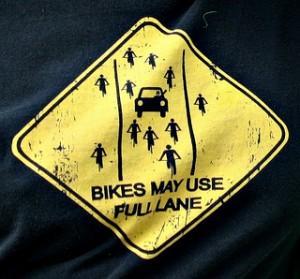
People are funny, stubborn creatures sometimes. Even as evidence continues to pile up, habits persist. No matter one’s values or decision making process, it is hard to see how biking isn’t the preferred method of transportation.
Biking is healthy. A thirty minute bike commute burns 300 calories, reduces heart disease risk by 50%, helps the average person lose 13 lbs. over a year, and reduces the likelihood of obesity. Second, biking is cheap. The annual operating expenses of biking versus driving are $300 and $8,000, respectively. If one is obese, the increased exercise can lower health costs by $500 a year. Also, biking is fantastic for the environment. In May of last year during Ann Arbor’s Commuter Challenge month, “1,817 participants in the event were able to save 278,000 pounds of carbon dioxide from entering the atmosphere by not driving to work at least one day out of the month – the equivalent of the annual emissions of 25 cars.” Finally, in a country that values freedom and independence, biking uses self-generated energy and one can easily learn how to fix their own bike.
The primary excuse I hear for not biking is that it is too far or the kids need to be taken to school. There is one response to this statement: move closer. Already half of the U.S. population lives within 5 miles of work. It probably isn’t cheaper to live further away. Transportation costs are the second largest item in a household’s budget. As noted above, maybe those saved operating expenses from biking could go towards rent/mortgage. Now that walkscore includes bikescore, the information is out there to make the decision.
Since many cities in the U.S. were designed around the car, a few changes can significantly increase a city’s’ bike friendliness. The first is obvious – build bike infrastructure and bike lanes. They can be as cheap as a can of paint or as expensive as this beauty in the Netherlands. Experience shows that these investments increase safety and retail performance, things car-oriented cities dearly need. Also, people are more likely to bike if there are places to bike to nearby. New housing and retail development near existing population centers (“infill development”) also creates the most revenue per unit, especially important in these financially tight times. These two investments can entice new bikers to give it a try.
So again I ask, what is your excuse?
Image Source

